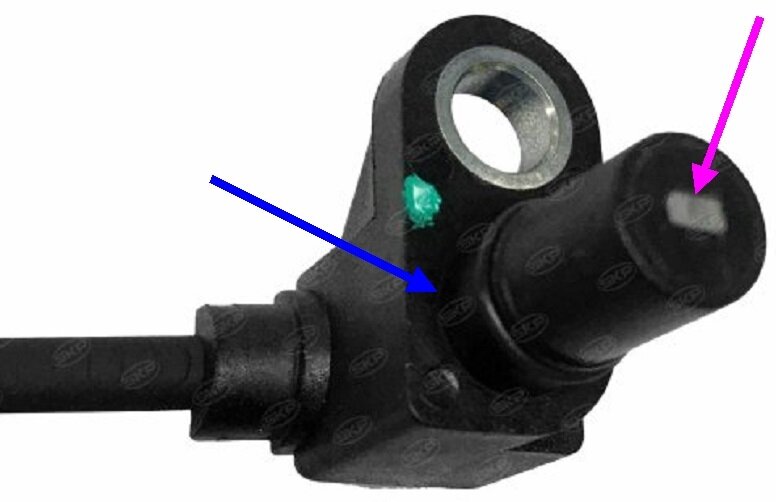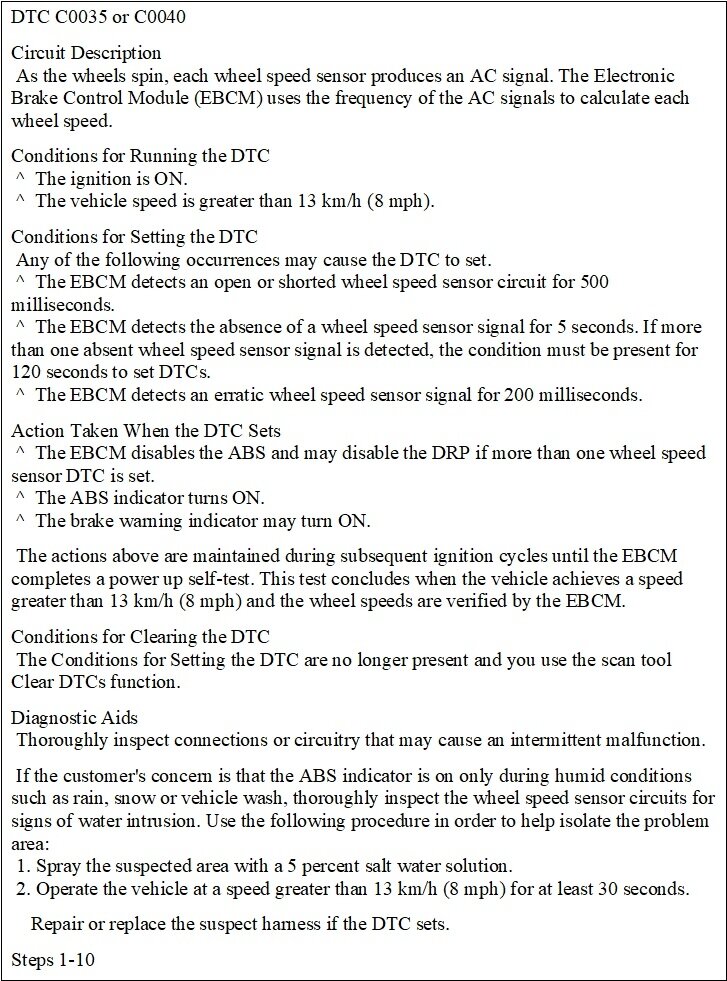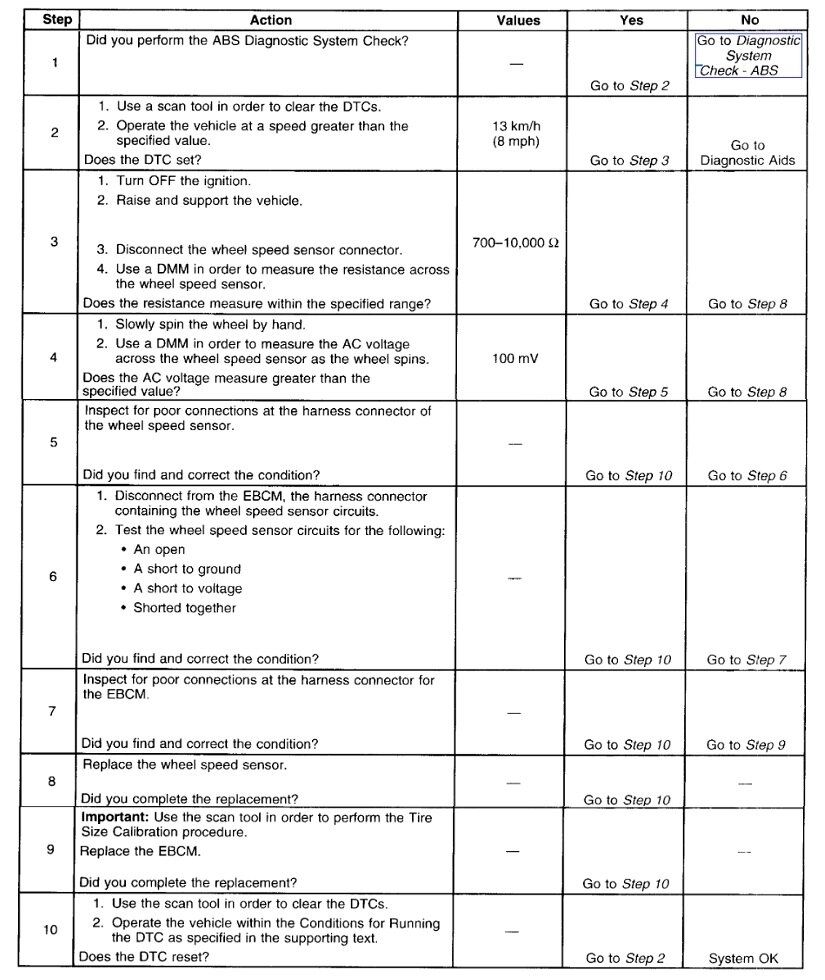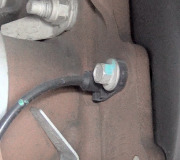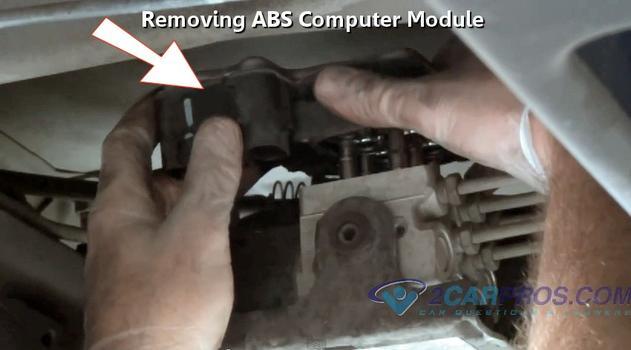The first problem is no diagnostic fault code ever says to replace a part or that one is defective. When a part, the sensor in this case, is referenced in a fault code, it is the cause of that code only about half of the time, so you could get lucky and solve the problem about half of the time. Before we spend our customer's money on a part, there are a number of electrical checks we can do. Those include checking for broken or frayed wires, corroded connector terminals, and mechanical problems associated with that part.
Next, we need to know the exact fault code number. If you provide that, I can look for the diagnostic steps for you involved with solving that problem. We also need to know if this was a front or rear sensor.
There is a very common problem that comes to mind that only applies to GM trucks. GM has two different sensor designs that both generate very wimpy signals to start with. If anything happens to cause those signals to become weaker, but still present, it will lead to "false activation", meaning the anti-lock function activates when it isn't needed.
By unplugging a sensor to cause the system to turn itself off, you proved the base brake system is working properly. The next part of this story depends on the fault code number and description. That will help us determine what the ABS Computer was detecting. Without knowing that, I can still share the common problems you might be experiencing. One is a buildup of rust or metal particles on the end of one of the sensors. The pink arrow in the photo below is pointing to the exposed end of the magnet where debris can accumulate. Signals are generated by the teeth on the tone ring passing by this magnet. They disturb the magnetic field, and by it changing, it induces a signal voltage in the coil of wire wrapped around that magnet.
I should stop here for a second and explain that to generate a voltage mechanically, as in a magnetic sensor, or a generator, three things are required. Those are a piece of wire, (we use a coil as it's much more efficient), a magnetic field, and most importantly, movement between them. That's why we need to spin a generator with a belt and pulley.
In your ABS sensor, the coil of wire is wound around a permanent magnet. The movement we need is not exactly the toothed tone ring. As those teeth pass by the tip of the magnet, they cause distortions in the magnetic lines of force. THAT is the movement of the magnetic field relative to the coil of wire. As the speed of that movement decreases, the effectiveness of the signal voltage goes down, eventually to the point the voltage is too low for the ABS Computer to read. That is why all ABS systems are designed to stop operating below nine or 15 mph.
The first problem is when debris builds up on that tip, it reduces the amount of change in the magnetic field, so the signal voltage drops lower. As I mentioned, this sensor already produces a very weak signal. When debris reduces the signal even more, it may become too weak for the computer to see, so it thinks that wheel has locked up, perhaps while the other wheels are reading 25 mph. In response, the computer pulses the brake fluid pressure to the "locked" brake to try to get that wheel spinning again. You would feel that pulsation in the brake pedal. Also, depending on the design of the system, it is possible for the brake pedal to slowly sink closer to the floor during the activation. The clue is once the vehicle slows enough for the system to stop activation, the brake pedal will feel normal again.
The second, and probably more common problem these sensors develop is rust buildup under the sensor's mounting surface. My blue arrow is pointing to that area. That buildup pushes the sensor away from the toothed ring, resulting in a much weaker signal being developed. The first thing I like to do is watch the road speeds and sensor signal voltages on a scanner during a test drive. When they all agree on road speed, it's a good indication the sensors are working. Next, I watch what happens when slowing down. Between roughly 20 - 30 mph, if one sensor drops suddenly to 0 mph, or the signal voltage is much lower than those for the other sensors, it's a good indication of rust buildup.
One place where you can introduce a new problem is by attempting to solve the first one. ABS systems of the four-wheel design usually are programmed to ignore the fastest wheel speed when the brake pedal is pressed. Next, of the remaining three wheels it's watching, if one slows a predetermined percentage below the other two, the system goes into action to reduce, or modulate brake fluid pressure to that wheel, even if you push harder on the pedal. You may have inadvertently solved the lowest-performing sensor by replacing it. Now it's the other three that will likely have one as the weakest at low speeds. If you replaced the left front sensor, for example, there's a good chance the solution now is to replace the right front one, or to clean any rust or debris from it. Remember, if the sensor was defective, the yellow warning light would be on all the time and the system would never activate.
A sensor with a break in its coil of wire, or a break in the pigtail wire, or corrosion between a pair of mating connector terminals would be detected right away before you even start driving. Debris buildup would not be detected until the other three sensors are showing road speed. The warning light would not turn on until you were driving. A cracked tone ring creates an additional signal pulse every wheel revolution, similar to when going around a corner. That typically takes up to a mile for the computer to recognize.
If you don't have access to a scanner, your best bet is to start with inspecting both front sensors for that rust and debris. You won't find debris on the magnet's tip on the new sensor, but there could be rust on the mounting surface on the hub.
Let me know what you find.
Here's links to a couple of articles you might find of interest too:
https://www.2carpros.com/articles/abs-wheel-speed-sensor-test
https://www.2carpros.com/articles/how-to-replace-an-abs-wheel-speed-sensor
Image (Click to make bigger)
Thursday, October 31st, 2024 AT 3:52 PM
